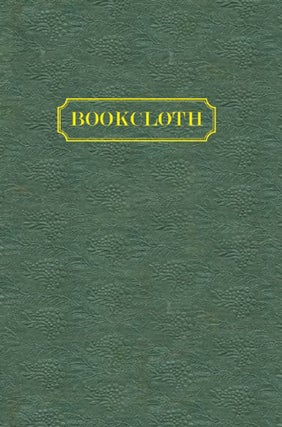Preface
When I was starting in the field, a man more advanced than I mentioned that cloth grains speak to you from across the room. I was taken aback—they were not conversing with me. If they could speak, I was unable to hear them. I went on to learn, from reading contemporary accounts, that graining was a process of "imprinting all over the cloth, of a small and uniform pattern calculated to hide the barrenness and stiff uniformity of the threads in the cloth." Graining persisted for sixty years through a succession of patterns, each usually quite limited in time.
By 1890, a natural look was in favor for bookcloth. One critic wrote dismissively that cloths "with arbitrary grains" were no longer wanted. Grainings went out of fashion and are not seen on bookcloths today. But they remain on the nineteenth-century books—the plentiful brown rib grains, the rare pansy-face grains, the often amazing beauty of the ribbon-embossed patterns.
The grains are important. Not only can we date bindings by a knowledge of grain development, but they are also an essential part of our tactile and visual experience of the book covers. They are historical, unique, uncopyable. They excite our wonder and curiosity. Such recent scholars as Blanck, Tanselle, and Ball have carried their study forward and offered models for naming and description, with a selection of pictured representations.
In the history of the mechanization of cotton spinning and weaving (1780-1820), several names stand out—Kay;s flying shuttle, Hargreaves;s spinning jenny. A good portion of inventive England seemed absorbed in solving problems of individual parts. Then came Richard Arkwright, gifted with the ability to see the whole, how to put the parts together in sequence to produce machine-made cotton.
In her own field, Andrea Krupp has accomplished something of what Sir Richard Arkwright did in his. Taking the beginnings of others, building on them with discipline and scholarship, she has created a working system of cloth grain nomenclature and identification.
Advances in photographic reproduction allow the showing of a picture of every grain, referenced by name and number. To me the most valuable feature is the precise date span assigned to each grain—provisionally, since this is a system destined to expand.
Now, in truth, cloth grains speak a language—a language we can all learn to read. Andrea's book provides its dictionary and grammar—concise, handy, indispensable. It would be impossible to embark on any consideration of cloth grains without it.
Sue Allen

